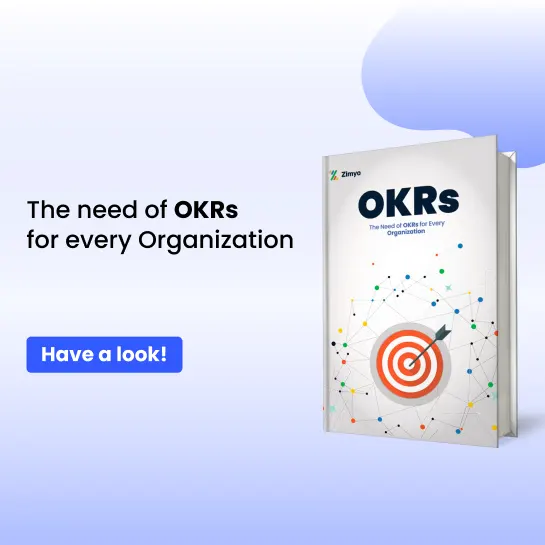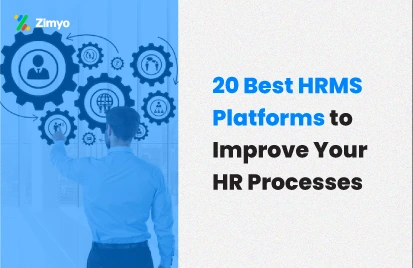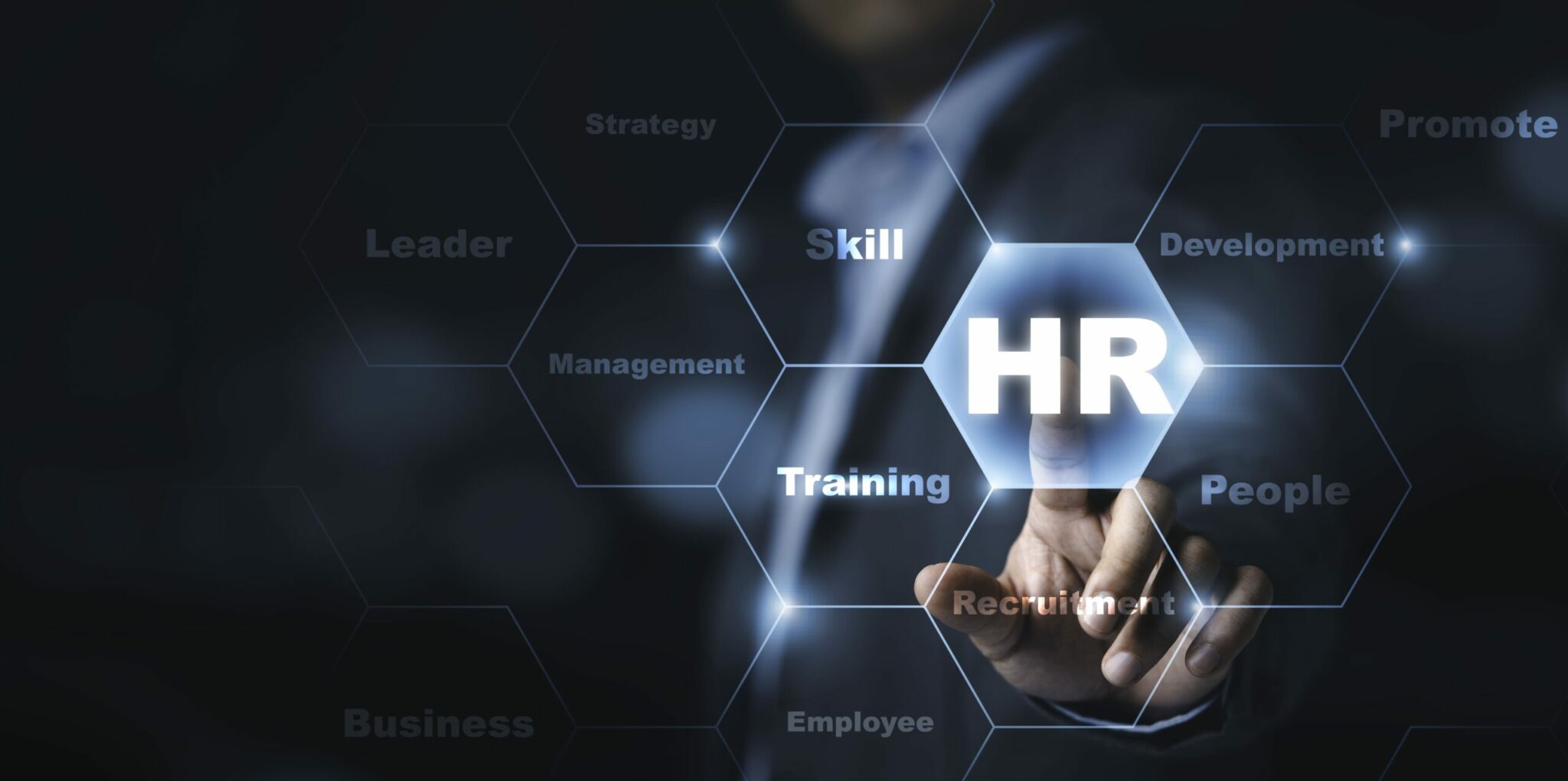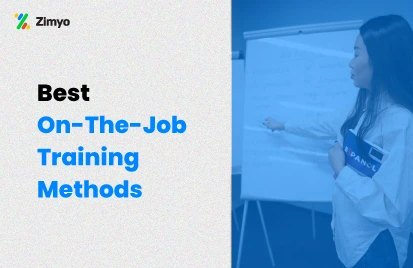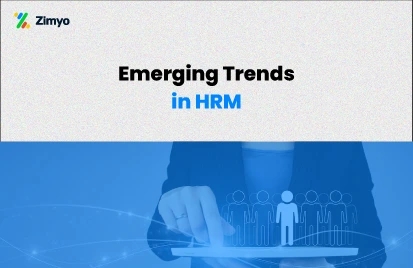Why is the HRP Process Essential for Success?
Have you ever thought about what it takes to ensure your organization has the right people in the right place, at the right time? That’s where Human Resource Planning (HRP) comes into play. It’s not just a routine task; it’s a strategic HR planning process that lays the foundation for your organization’s success. Human resource planning is essential for CEOs, HR professionals, and anyone involved in managing a team.
Let’s explore this topic together. We’ll uncover the meaning, importance, and HRP process, along with its fascinating history and tools. You’ll also discover practical examples and tips to make manpower planning work for your organization. By the end, you’ll have a clear roadmap to navigate the human resource management plan and HR planning process confidently.
What do you mean by Human Resource Planning?
So, what exactly is Human Resource Planning (HRP)? HRP is all about ensuring that your organization has the right number of employees with the right skills at the right time. Think of it as crafting a winning recipe where each ingredient represents a member of your team.
In simpler words, human resource planning helps you prepare for current and future staffing needs. It ensures that your workforce aligns with your business goals, reducing risks like overstaffing or understaffing. The HRP process involves analyzing and forecasting your organization’s needs, so you can implement an effective human resource planning process. By focusing on manpower planning, you ensure that you’re ready to meet challenges and capitalize on opportunities.
This is why HR planning is a key aspect of a successful business strategy, as it helps in creating a robust human resource management plan. The HR planning process supports decision-making and ensures that the HR management plan is aligned with the overall objectives of the organization.
How do you Define Human Resource Planning?
Over time, scholars have defined HRP to highlight its role in organizational success.
“A process by which an organization should move from its current manpower position to the desired manpower position.” Similarly, Robbins and Coulter emphasize that HRP ensures managers have “the right number and right kind of capable people in the right places and at the right times.”
E.W. Vetter
This definition reminds us that HRP is both an art and a science.
What is Human Resource Planning (HRP) Used For?
Human Resource Planning (HRP) is used to ensure businesses always have the right number of skilled employees to meet their goals. It helps identify current workforce strengths, predict future staffing needs, and address gaps before they become problems. For example, if a company plans to grow by 20% next year, the HRP process ensures the business is ready with the necessary manpower to support that growth.
HRP is more than just hiring; it involves manpower planning, training, motivation, and even succession planning. It equips businesses to handle challenges like employee absences, resignations, or changes in demand. With tools like trend analysis and HR management plans, businesses can reduce hiring costs by up to 30% and improve retention by 25%. These strategies make companies adaptable to both short-term needs and long-term goals.
For small businesses, human resource planning ensures competitiveness by helping them align workforce capabilities with their business objectives. It prevents overstaffing or understaffing, saving money and avoiding disruptions. By staying ahead of trends like automation or remote work, a solid hr planning process ensures a business remains efficient and future-ready.
What is the Need of Human Resource Planning?

Why does HRP matter to you and your business? Because it helps in following:
- Increasing Productivity
- Implementing Managerial Activities
- Motivating Employees
- Coping with Change
- Gaining a Competitive Edge
Let’s understand each one of these in detail:
1. Increasing Productivity
Every organization wants to achieve more with less. Human resource planning ensures optimal resource allocation. For example, a well-trained team can complete projects faster, reducing operational costs.
2. Implementing Managerial Activities
Your managerial tasks like organizing and directing rely on having the right people. Imagine planning a project without knowing if you have enough skilled workers. The HRP process prevents such gaps and ensures the right fit for every role.
3. Motivating Employees
Motivation is the secret sauce of employee performance. Through human resource planning, you can design incentives and career development plans that keep your team engaged and aligned with the human resource management plan.
4. Coping with Change
The business world is dynamic. HRP helps you adapt by identifying future workforce needs. For instance, if technology trends shift, manpower planning ensures your team is ready and agile to face changes.
5. Gaining a Competitive Edge
Companies with effective HRP outperform their peers. They hire smarter, train better, and adapt faster. Studies show that organizations practicing the human resource planning process see up to 15% higher efficiency.
History and Evolution of Human Resource Planning (HRP)
Human resource planning (HRP) has evolved over time as part of the broader field of human resource management (HRM). The idea of HRP draws from earlier management theories, like scientific management developed by Frederick Winslow Taylor in the late 19th century, and the System Theory by Niklas Luhmann. These early theories helped shape HRP, providing a framework for managing human resources based on clear guidelines. Back in the late 19th and early 20th centuries, this approach worked well since most workers were involved in factory and production jobs.
However, today’s HR planning faces many challenges. Demographic shifts, political changes, fierce international competition, rapid technological advancements, and the growing demands of customers all impact the HRP process. These changes have made it clear that HRP is no longer just about predicting the future; it now requires more thoughtful assumptions and considerations. This shift is helping ensure that the human resource planning process remains relevant and adaptable over time.
In essence, HRP today is not just about predicting manpower needs; it’s a more dynamic process that takes into account various factors, ensuring that a solid HR management plan can support the organization’s evolving goals and challenges.
HRP—Human Resource Planning Process

The HRP process is like building a puzzle. Here are its six key steps:
- Analyzing the Environment
- Predicting Labour Demands
- Assessing Labour Supply
- Bridging Gaps
- Implementation Planning
- Oversight and Evaluation
Now let’s understand the whole HRP process step by step…
Step 1: Analyse the Environment
Start by examining internal and external factors. For example, assess your company’s growth goals and industry trends as part of your human resource planning.
Step 2: Predicting Human Resource Demands
Use qualitative and quantitative methods to forecast future staffing needs. For instance, trend analysis can predict a 10% increase in workforce demand if sales grow by 20%, a key element of the HRP process.
Step 3: Assessing Human Resource Supply
Evaluate your current workforce and external talent pool. HR Information Systems (HRIS) can help analyze internal trends, forming an integral part of your HRP process.
Step 4: Bridging Resource Gaps
Identify shortages or surpluses in skills. Create strategies like hiring, training, or restructuring to close these gaps, which is a vital component of manpower planning and the human resource management plan.
Step 5: Implementation Planning
Develop actionable plans, such as recruitment drives or training sessions. Ensure alignment with your overall business strategy, ensuring that the hr management plan is effectively executed.
Step 6: Oversight and Evaluation
Monitor progress. Adjust plans based on outcomes and feedback to refine your overall human resource planning process and stay aligned with business goals. A complete 360 degree feedback strategy can help you with this.
What are the Challenges in Human Resource Planning (HRP)?
What makes Human Resource Planning (HRP) so challenging? While HRP is crucial for success, it’s not always smooth sailing.
Here are some challenges of Human Resource Planning (HRP):
- Predicting Future Workforce Needs
- Managing Talent in a Competitive Market
- Globalization and Its Complexity
- Continuous Effort Required
- Increased Costs and Resources
Now we will help you understand these common HRP challenges in detail:
1. Predicting Future Workforce Needs:
- Difficulty in forecasting due to rapid technological advancements.
- Unpredictable events (e.g., economic downturns, global crises like the COVID-19 pandemic) can disrupt HR plans.
2. Managing Talent in a Competitive Market:
- Skilled employees are in high demand, and competitors may lure top talent with better offers, complicating manpower planning.
3. Globalisation and Its Complexity:
- Different labor laws and cultural differences add complexity to HRP.
- Remote work necessitates new recruitment and engagement tools and strategies, which can be time-consuming and costly.
4. Continuous Effort Required:
- HRP cannot be a one-time task; regular reviews are necessary to align the plan with evolving business needs and external factors.
- Ongoing effort can be resource-intensive and expensive, as it may take months to see visible results.
5. Increased Costs and Resources:
- Adjusting HRP to new needs and challenges, such as remote work, can increase costs and require significant investment in new tools and practices.
Tools and Techniques Used in Human Resource Planning (HRP)
Some of the most helpful tools used in HRP are:
- HR Software
- Payroll Software
- Applicant Tracking System (ATS)
- Recruitment Management System
- Performance Management System (PMS)
HRP relies on various tools to achieve precision. Be ready to know the uses of these tools in HRP!
1. Job Analysis
Understanding job roles to align hiring with business goals is a critical step in the human resource planning process.
Tool: Recruitment Management Software
Example: Zimyo Recruitment Management Software, which streamlines the hiring process by finding the right candidates and moving them seamlessly into onboarding, making recruitment 2X faster and more efficient.
2. Forecasting Techniques
Use methods like Delphi or regression analysis to predict workforce needs, ensuring the HRP process is aligned with future business requirements.
Note: No specific tools are used here; only techniques like data analysis, expert opinions and reading about the latest HR trends can help you out.
3. Hiring Systems
Utilize advanced recruitment tools like personality tests and interviews to identify the right fit. Modern tools include smart recruitment management systems integrated with applicant tracking systems (ATS) for efficient hiring.
Tool: Recruitment Management Software with ATS
Example: Zimyo’s Applicant Tracking System includes features like job board integration, bulk resume parsing, and interview scheduling to reduce hiring time and streamline processes
4. HR Technology
HRMS software automates planning tasks, saving time and improving accuracy. These tools are vital for creating future-ready HR solutions and integrating workforce management into the overall HR plan.
Tools: HRMS, HR Software, Payroll Software
Example: Zimyo HR Software offers a holistic approach to HR management, from hire to retire, automating tasks like payroll processing, document management, and centralized employee management
What is “Hard” vs. “Soft” Human Resource Planning?
First, hard HRP is all about numbers. It focuses on metrics like workforce size, job vacancies, and skills needed to meet business demands. For example, imagine a company predicting that it needs 50 new software engineers over the next year. This involves crunching data, forecasting trends, and using tools like workforce analytics. It’s practical, precise, and ensures your team is never overstaffed or understaffed.
On the other hand, soft HRP looks beyond numbers. It’s about finding people who align with your company’s culture and values. Think about hiring someone not just for their technical skills but because they share your vision and bring enthusiasm to the table. For instance, a retail business might prioritize hiring employees who excel in customer service and create a positive shopping experience for customers.
Now, why do we need both? Because they complement each other! Hard HRP ensures you have the right quantity of talent through effective manpower planning. Soft HRP ensures that talent fits your company’s personality and goals. Together, they create a balanced human resource management plan that supports long-term success.
Example of Hard & Soft Human Resource Planning
A startup aiming to grow by 35% next year may use hard HRP to identify the specific roles and skills needed, like marketing analysts or developers. Simultaneously, it will rely on soft HRP to find team members who thrive in a fast-paced, innovative environment.
When implementing these strategies, don’t forget to revisit your HR planning process regularly. As industries evolve, so do staffing needs. Reviewing your human resource planning process annually or after major changes keeps your strategy on track.
In short, hard HRP is about data-driven decisions, while soft HRP focuses on the human touch. By blending both, we can create an effective HR management plan that supports growth and employee satisfaction. What do you think—are you ready to refine your HRP Process? Let’s make it work for you!
Here’s a concise tabular comparison between Hard HRP and Soft HRP:
Aspect | Hard HRP | Soft HRP |
Focus | Numbers, metrics, and workforce demand. | Employee values, motivation, and cultural fit. |
Approach | Quantitative and data-driven. | Qualitative and people-oriented. |
Objective | Ensures the right number of employees with the right skills. | Ensures employees align with company culture and long-term goals. |
Tools Used | Workforce analytics, trend forecasting, job analysis. | Behavioral assessments, interviews, team-building exercises. |
Example | Planning to hire 50 engineers for a project within a year. | Hiring employees who value teamwork and innovation for a startup. |
Outcome | Accurate manpower planning to meet operational needs. | A cohesive team that drives organizational growth and morale. |
Review Cycle | Regularly reviewed to match business growth or market trends. | Reviewed based on organizational culture shifts or leadership changes. |
The Crux of HRP
Human Resource Planning (HRP) isn’t just a task; it’s a strategic investment. It empowers you to align your workforce with your business goals, ensuring sustainable growth. From analyzing the environment to implementing actionable plans, the HRP process transforms challenges into opportunities.
Whether you’re a seasoned CEO or an aspiring HR professional, mastering human resource planning is your key to success. The human resource planning process involves careful consideration of your current and future needs, helping to achieve the optimal workforce structure through manpower planning.
By focusing on HRP and continuously refining your human resource management plan, you can ensure that your business has the right talent in place at the right time. Start today with an effective HR planning process and implement your HR management plan—watch your organization thrive.
Key Takeaways:
- Definition of HRP:
HRP ensures the organization has the right number of employees with the right skills at the right time, aligning workforce capabilities with business goals. - Importance of HRP:
- Enhances productivity through optimal resource allocation.
- Supports managerial activities like organizing and directing.
- Motivates employees through tailored career and incentive plans.
- Helps adapt to changes, such as technology shifts or market dynamics.
- Provides a competitive edge by ensuring efficiency and adaptability.
- The HRP Process:
- Analyze the Environment: Assess internal and external factors affecting workforce needs.
- Predict Labour Demand: Use forecasting methods to determine future staffing requirements.
- Assess Labour Supply: Evaluate internal and external talent availability.
- Bridge Gaps: Address skill shortages or surpluses with hiring, training, or restructuring.
- Implementation Planning: Align HR strategies with overall business objectives.
- Monitor and Evaluate: Continuously refine plans based on outcomes and feedback.
- History and Evolution:
HRP evolved from a basic focus on worker welfare to a strategic field integrating technology and behavioral science. - Hard vs. Soft HRP:
- Hard HRP: Data-driven, focuses on workforce size and skills for operational needs.
- Soft HRP: People-oriented, emphasizes cultural fit and employee alignment with long-term goals.
- Challenges in HRP:
- Predicting workforce needs amid rapid changes.
- Managing talent in a competitive and globalized market.
- Adapting to disruptions like economic shifts or technological advancements.
- Tools and Techniques:
- Job analysis, forecasting methods, recruitment tools, and HRMS software enhance accuracy and efficiency.
- Benefits of HRP:
- Reduces costs by preventing overstaffing or understaffing.
- Improves employee retention and engagement.
- Aligns workforce strategy with business goals for sustained growth.
- Revisiting HRP:
HRP should be reviewed annually or after significant business changes to stay aligned with evolving needs. - HRP for Small Businesses:
Small businesses can leverage HRP to remain competitive by aligning talent needs with strategic goals.
A Final Note...
HRP is a strategic process that transforms workforce challenges into opportunities, ensuring organizational growth and sustainability.
“Are you ready to take your organization to the next level by mastering the art and science of Human Resource Planning? What steps will you take today to ensure you have the right people, in the right roles, at the right time?”
Frequently Asked Questions (FAQs)
What is the primary goal of HRP?
The main goal of human resource planning (HRP) is to ensure the right people are in the right roles at the right time to meet business needs, aligning with the broader HRP process and goals of effective manpower planning.
How does HRP help in reducing costs?
HR planning prevents overstaffing and understaffing, saving money on recruitment, training, and salaries. By optimizing the human resource planning process, businesses can manage their workforce efficiently, minimizing unnecessary expenditures.
Can small businesses benefit from HRP?
Absolutely. Even small businesses need to plan their workforce through a well-defined human resource management plan to stay competitive. A well organised HR planning process ensures that they have the right talent at the right time.
What tools are essential for HRP?
Tools like job analysis, trend forecasting, and HRMS software are vital for effective human resource planning. These tools help in creating a robust HR management plan and support the overall HRP process.
How often should HRP be revisited?
Ideally, HRP should be reviewed annually or whenever there are significant business changes. This ensures that the HR planning process is always aligned with evolving business needs.
What is meant by HRP?
Human resource planning (HRP) is a way for companies to make sure they have enough skilled workers, avoiding too few or too many employees. The HRP process helps address short-term staffing needs and adjust to long-term changes in the business. HR planning, or manpower planning, is important for creating a human resource management plan. The HR planning process makes sure the right people are in the right jobs when needed, supporting the company’s goals.
What is HRP short for?
HRP is short for Human Resource Planning.
What does HRP do?
HRP (Human Resource Planning) ensures that a company has the right number of skilled employees at the right time. It helps manage staffing levels, prevent shortages or surpluses, and adapt to changing business needs. HRP involves assessing current and future workforce needs, filling skill gaps, and aligning human resources with the company’s goals.
What is the HR planning process?
The HR planning process involves several key steps:
- Analyzing Current Workforce: Assess the current skills, number of employees, and workforce demographics.
- Forecasting Future HR Needs: Predict the company’s future staffing needs based on business goals and market trends.
- Identifying Gaps: Identify any skill gaps or shortages in the workforce that need to be addressed.
- Developing HR Strategies: Create plans to fill gaps, such as recruitment, training, or reskilling existing employees.
- Implementation: Put the HR strategies into action, such as hiring new employees or offering development programs.
- Monitoring and Evaluation: Continuously review and adjust the HR plan to ensure it meets the company’s evolving needs.
This process ensures the organization has the right talent in place to achieve its goals.
What is the difference between HRP and HRM?
Human Resource Planning (HRP) focuses on forecasting and managing a company’s workforce needs, ensuring the right number of employees with the right skills are available at the right time. It involves analyzing workforce needs, identifying gaps, and creating strategies for recruitment, training, and development. On the other hand, Human Resource Management (HRM) is a broader function that covers all aspects of managing employees, including recruitment, training, performance management, compensation, and employee relations. HRM emphasizes overall people management strategies, while HRP is specifically concerned with workforce planning and aligning talent with organizational goals.
Read More...
Top HR interview Questions and Answers
Best Work Anniversary Wishes to make someone’s day
Know the correct Appointment Letter Format
Fun Office Games to Play at Work on Fun Fridays
Amendments to the Employees Deposit Linked Insurance Scheme, 1976
Understand Your Joining Letter Format
What are the Functions of Human Resource Management HRM
Best Farewell Quotes to make Someone’s Farewell Day Memorable
Adjustment of Minimum Wage Rates in Punjab
New Contribution Rates for Labour Welfare Fund in West Bengal

